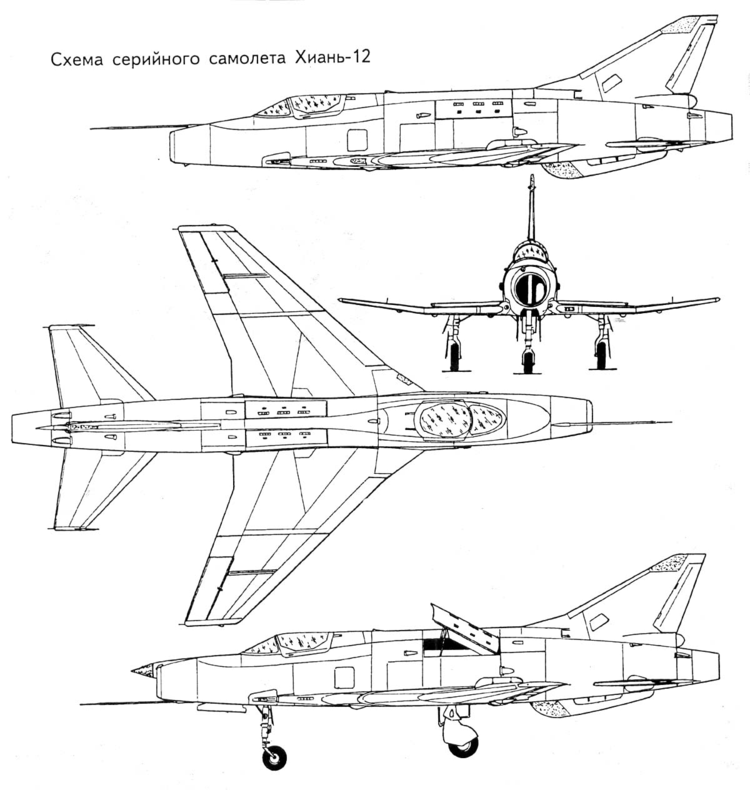Top speed 1,300 km/h Wingspan 7.2 m Weight 3,172 kg First flight December 26, 1970 | Range 688 km Length 10 m Engine type Turbojet | |
 | ||
The NAMC J-12 (Chinese: 歼-12; NATO reporting name: unknown, if any) was a lightweight supersonic fighter built by the People's Republic of China for use by the PLAAF. It was one of the first serious attempts by Chinese aircraft manufacturers to develop an indigenous, modern jet fighter. Weighing 6,993 lb (3,172 kg) empty, the J-12 is one of the lightest jet fighters ever built. However, neither the J-12 nor the related Shenyang J-11 (Not to be confused with the Shenyang J-11 Flanker B+ that entered service in 1998) entered service.
In 1969, the PLAAF issued an order to build a small, inexpensive, STOL (short takeoff and landing) lightweight fighter in order to replace the MiG-19. Two designs were submitted, namely the Shenyang J-11 and the Nanchang J-12. Prototypes of J-12 was designed by Lu Xiao Peng and built by the Nanchang Aircraft Manufacturing Company (NAMC). Flight testing of the three prototypes began on December 26, 1970. Due to less than satisfactory performance, additional prototypes were built with improvements such as simplified control surfaces, a lighter area ruled fuselage, and revised intake. All variants of the first prototypes looked similar; the J-12 was a small single-seat jet fighter with low-set, swept wings, swept control surfaces, tubular fuselage, and nose intake with small or absent shock cone.
In 1977 the development of J-12 was abandoned, likely due to the introduction of Chengdu J-7, that offered superior performance and was based on the Soviet MiG-21F model. The J-12's main problems were inadequate firepower and engine thrust. The J-12 accumulated 61 hours in 135 flights by 1977. Nine J-12s were believed to have been built. In 1990s, Lu Xiao Peng proposed upgrading the J-12's fighter design with a reduced Radar cross-section to make the J-12 stealthy, and suggested a modified J-12 fighter to a carrier based fighter for PLA Navy. None of the proposals were accepted.
Specifications
General characteristics
Performance
Armament
